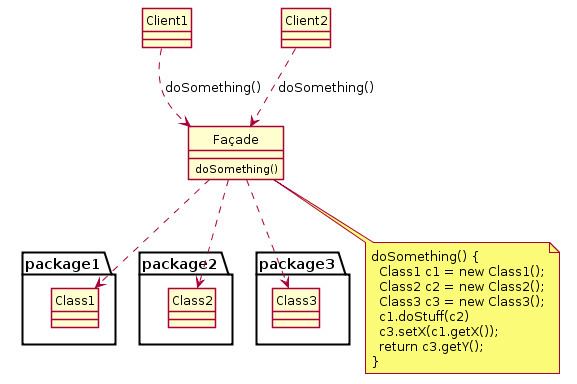 | ||
The facade pattern (also spelled façade) is a software design pattern commonly used with object-oriented programming. The name is by analogy to an architectural façade.
Contents
A facade is an object that provides a simplified interface to a larger body of code, such as a class library. A facade can
The Facade design pattern is often used when a system is very complex or difficult to understand because the system has a large number of interdependent classes or its source code is unavailable. This pattern hides the complexities of the larger system and provides a simpler interface to the client. It typically involves a single wrapper class that contains a set of members required by client. These members access the system on behalf of the facade client and hide the implementation details.
Usage
A Facade is used when an easier or simpler interface to an underlying object is desired. Alternatively, an adapter can be used when the wrapper must respect a particular interface and must support polymorphic behavior. A decorator makes it possible to add or alter behavior of an interface at run-time.
The facade pattern is typically used when
Example
This is an abstract example of how a client ("you") interacts with a facade (the "computer") to a complex system (internal computer parts, like CPU and HardDrive).
